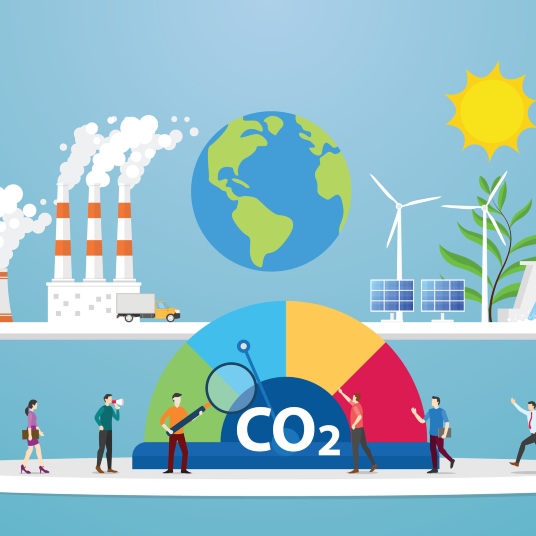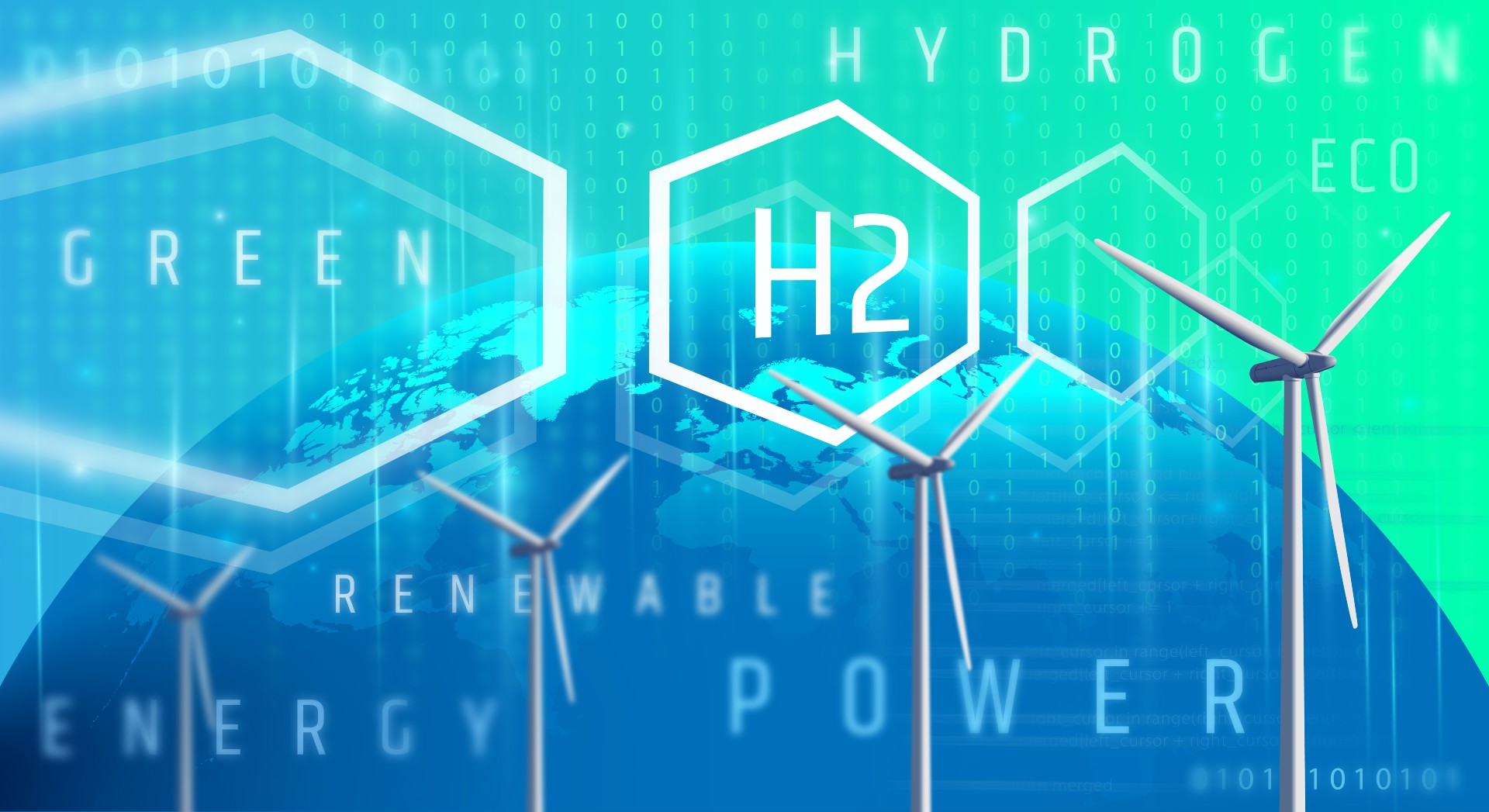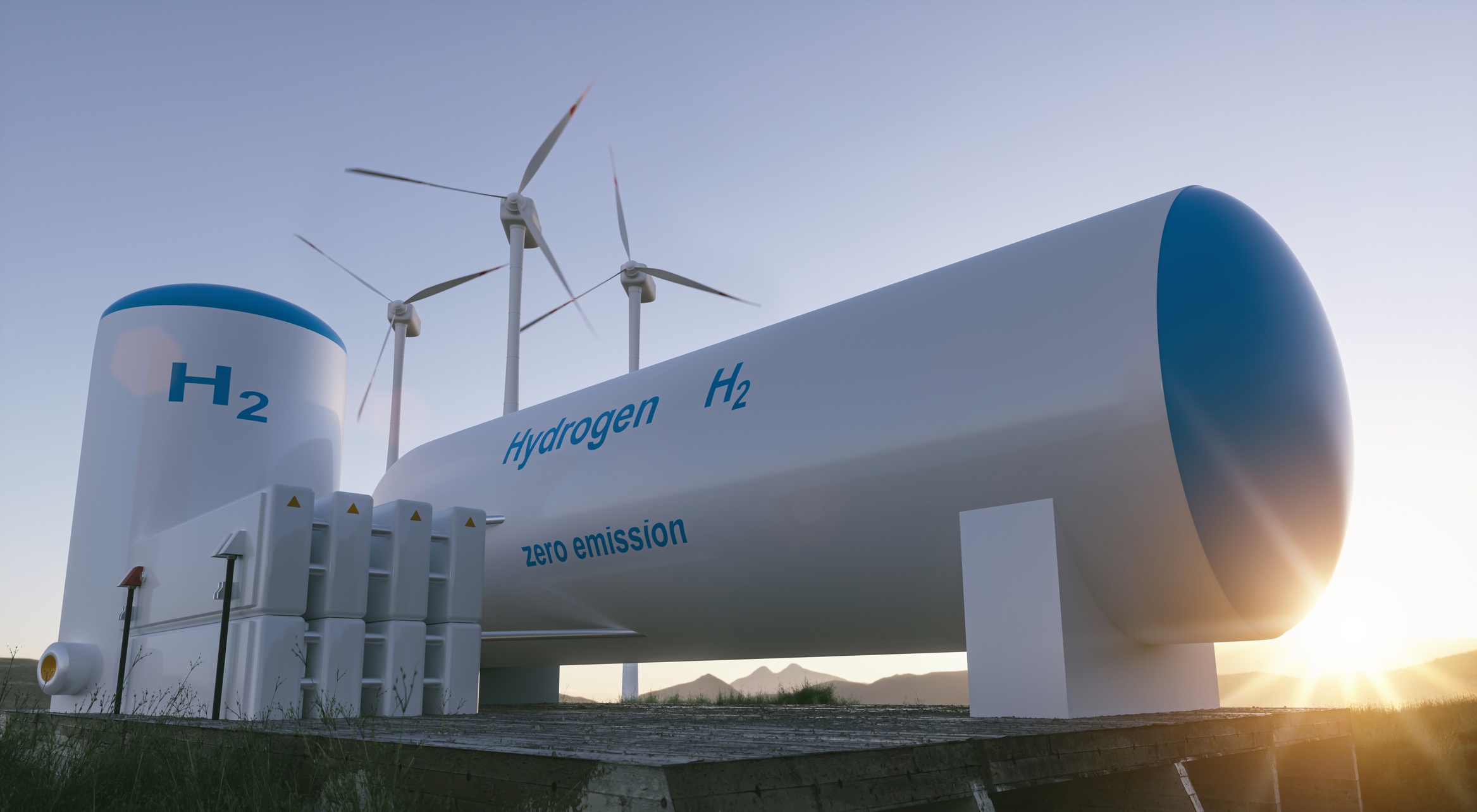Green hydrogen: the key to decarbonizing industry?
Green hydrogen, generated from renewable energies, has emerged as one of the strongest candidates for helping decarbonize sectors less dependent on electricity, taking us a step closer to carbon neutrality.
Limiting global warming to 1.5°C will require abandoning the use of fossil fuels by all economic sectors, including industrial. A variety of solutions will be necessary to fulfil global agreements and achieve carbon neutrality by 2050. One of these is green hydrogen, which will also contribute to decarbonization in activities less dependent on electricity.
What you’ll find in this article
- How will green hydrogen help decarbonize the economy?
- Green hydrogen and steelmaking
- Green hydrogen and the chemical industry
- Green hydrogen and refineries
- Barriers and challenges for green hydrogen in decarbonizing the economy
How will green hydrogen help decarbonize the economy?
 Green hydrogen is produced via electrolysis, a process that separates water into hydrogen and oxygen, using electricity generated from renewable sources. Today it represents just 0.1% of world hydrogen production. However, the decreasing costs of both renewable electricity and electrolysis technology are considerably brightening the outlook for this energy source. If you want to know more about the element, read this article.
Green hydrogen is produced via electrolysis, a process that separates water into hydrogen and oxygen, using electricity generated from renewable sources. Today it represents just 0.1% of world hydrogen production. However, the decreasing costs of both renewable electricity and electrolysis technology are considerably brightening the outlook for this energy source. If you want to know more about the element, read this article.
One of the main attractions of hydrogen is its versatility: not only can it be used as an energy vector (storage agency), but also as a fuel. It serves as much to store energy produced by renewable sources as to substitute fossil fuels like natural gas, and can also be used as a raw material in industrial chemical processes such as fertilizer production, in which hydrogen of fossil origin is currently used.
Its potential for many different uses make green hydrogen a highly promising alternative for those sectors where decarbonization and electricity use are more complex, for example in the steelmaking, chemical and refinery industries, and heavy transportation by land, air and sea.
“Green hydrogen is a highly promising alternative for those sectors where decarbonization and electricity use are more complex”
In fact, blocs like the European Union have already got green hydrogen down as one of the protagonists for the transformation toward a climate-neutral economy and cleaner planet. In July 2020, the European Commission proposed its hydrogen strategy for a climate-neutral Europe, with the aim of speeding up the development of clean hydrogen, thus establishing a role for it as a cornerstone of a climate-neutral energy system by 2050.
Green hydrogen for decarbonizing steelmaking
Contributing 7% of total carbon dioxide (CO2) emissions worldwide, the steel industry has an important opportunity to achieve decarbonization and reduce its footprint.
One of the solutions on the table is the injection of hydrogen into blast furnaces, where steel is made, thus substituting coke oven gas for a clean fuel (green hydrogen). This technology is still being demonstrated and there are still certain limitations, such as the cooling effect of the hydrogen inside the blast furnace.
Green hydrogen for decarbonizing the chemical industry
The chemical industry, with 10% of global energy consumption and 7% of greenhouse gas effect emissions, encompasses many sectors in the modern economy. It represents all activities focused on obtaining and transforming materials and composites by applying chemical processes to them.
Although the industry still largely depends on oil, hydrogen is now increasingly used in the manufacture of chemical and intermediate products. Real sustainable transformation will arrive when this hydrogen is completely green.
 Green hydrogen for decarbonizing refineries
Green hydrogen for decarbonizing refineries
Refineries are used to convert crude oil into products that are useful to people. Responsible for 4% of world CO2 emissions, this sector produces the likes of petrol, diesel, asphalt, kerosene, liquid gas, oils and other fuels.
One of the main uses of green hydrogen in this sector is as a substitute for fuels and hydrogen of fossil origin in various processes currently performed in refineries and petrochemical plants.
Another promising application in this sector is the development of sustainable fuels for heavy transportation, as in the aviation and maritime transport sectors.
Barriers and challenges for green hydrogen in decarbonizing the economy
Although there remains much to be done, the outlook is encouraging. Green hydrogen was mentioned in a series of commitments aimed at reducing emissions at the recent COP26 UN Climate Conference. Both governments and industry have recognized hydrogen as an important pillar in a net zero economy.
“Green hydrogen was mentioned in a series of commitments aimed at reducing emissions at COP26”
Around the world, ambitious projects are under way aimed at improving, developing and expanding green hydrogen production technology. ACCIONA Energía, for example, is leading a project to produce the first industrial renewable hydrogen in Spain, named Power to Green Hydrogen Mallorca.
At a facility in Lloseta on the island, the first green hydrogen molecules were generated in December 2021, with the aim of commencing industrial production at the start of 2022. A pioneering initiative for Spain and southern Europe, it is planned to produce at least 300 tonnes of the element per year and use it in different sectors on the island: for transport, heating, energy for buildings, etc.
But the present cost of obtaining green hydrogen continues to be much higher than fossil fuels, mainly because most green hydrogen projects are still at the starting stage. A drastic reduction in costs is forecast over the next few years, however, which will see it become more competitive than non-sustainable hydrogen, as innovative projects come to fruition and economies of scale are generated.
The other big challenge in generalizing the use of green hydrogen lies in the development of the infrastructure needed to store and distribute it on a large scale.
To sum up, there is still a lot of work to do, but green hydrogen is here to stay. The increase in its use will be vital in achieving, among others, the Paris Agreement climate commitments and zero-emission objectives the climate emergency needs.
Sources:
https://www.weforum.org/agenda/2021/06/4-technologies-accelerating-green-hydrogen-revolution/
https://www.sciencedirect.com/science/article/pii/S2214629621004497







